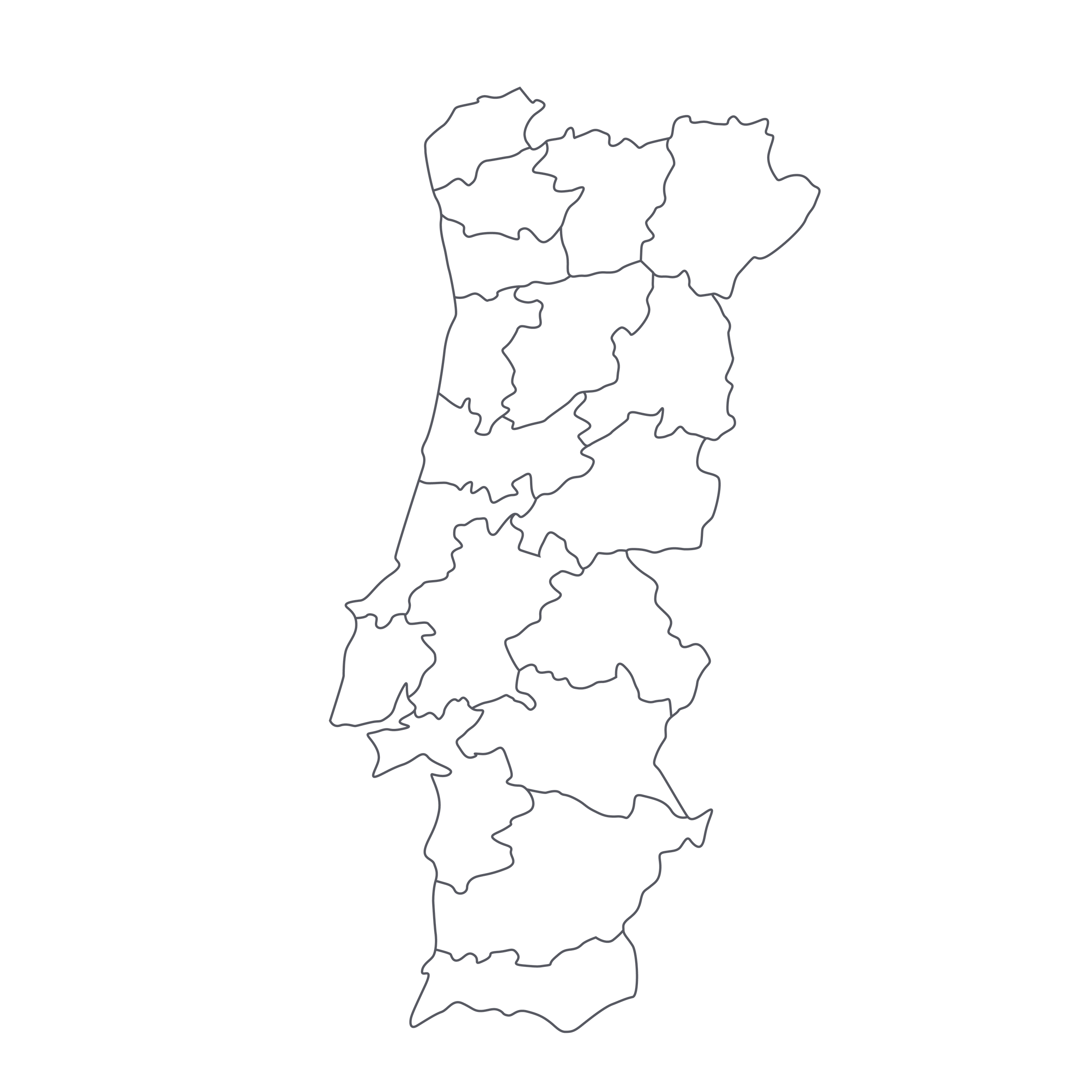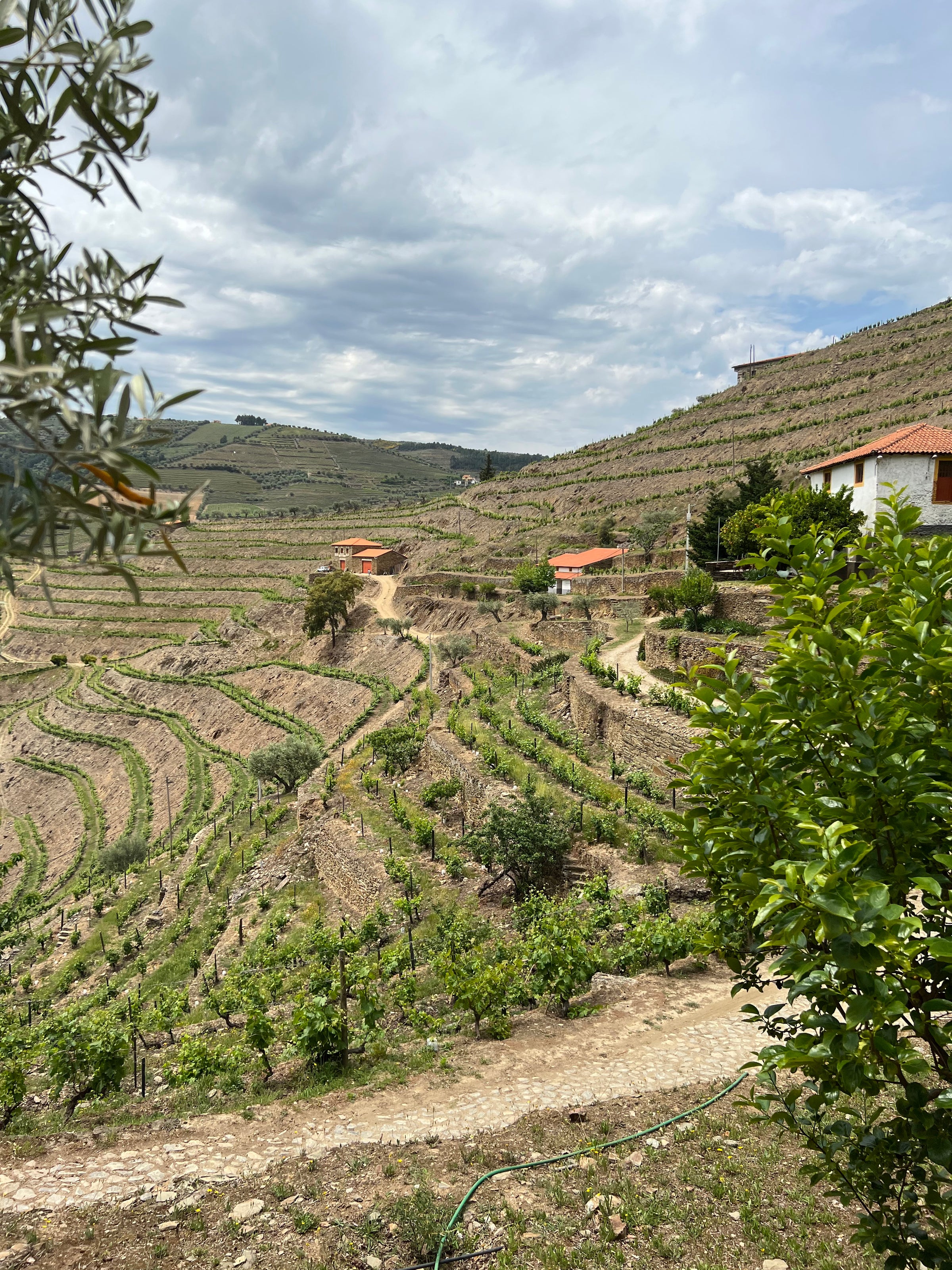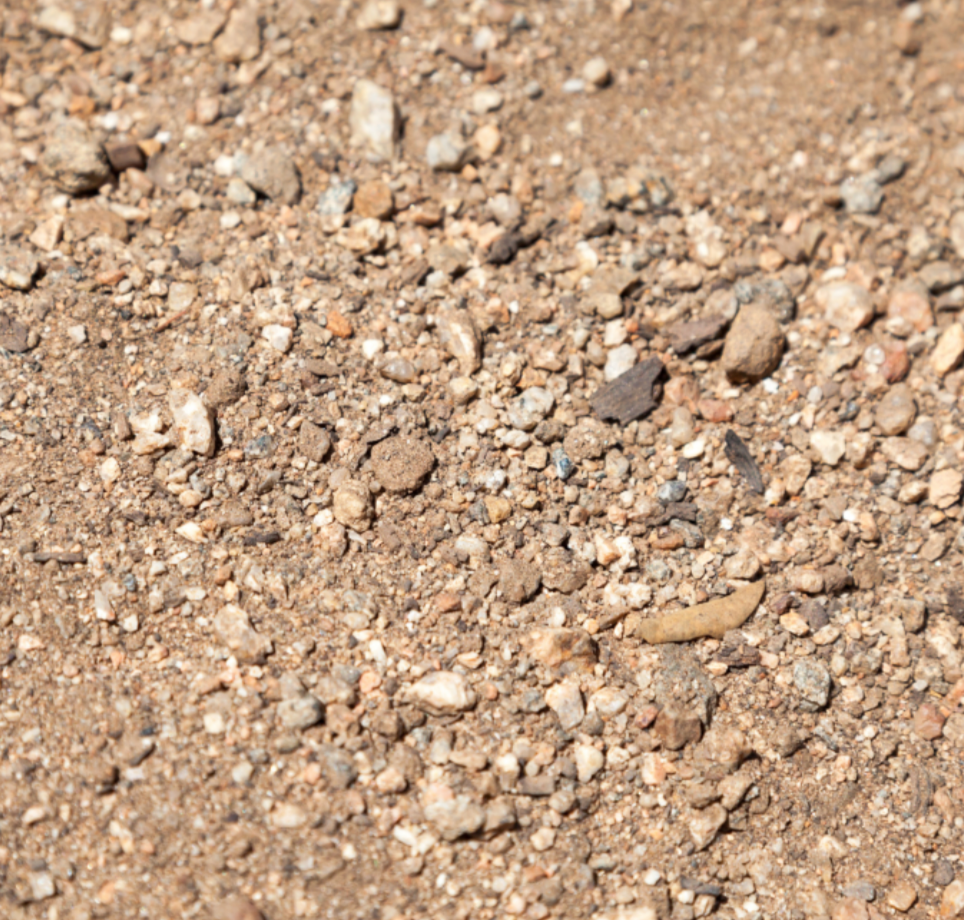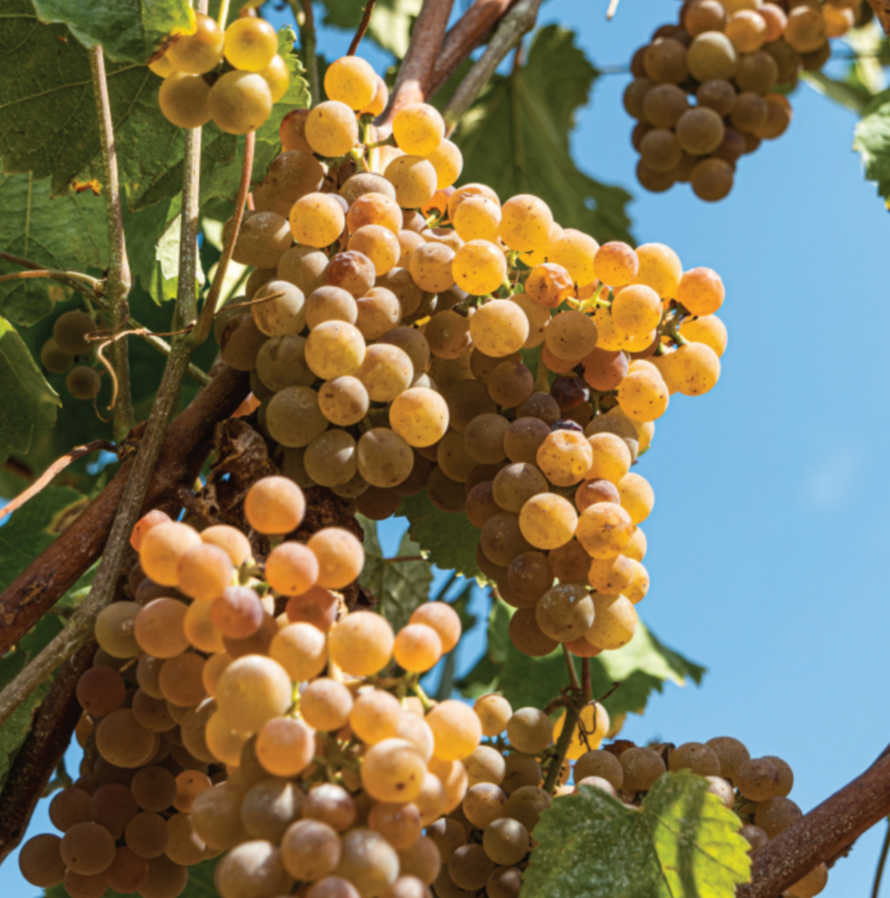Today’s powerful and mineral-driven red holds immense sentimental and educational importance for me. This is the bottle that started it all, and without this legendary property, and the profound lessons taught by its ancient vineyards and this specific bottling, I think my career in wine is an open question.
I’ll share my personal history with Real Companhia Velha’s “Evel” shortly—but in the meantime, let’s talk about today’s gorgeous wine, itself. For me, nothing so perfectly encapsulates the impossibly steep and tirelessly hand-farmed vineyards, the foot stomping of grapes in subterranean stone cellars, and the millennia-deep history of red wine production in northern Portugal. If you wish to gain a fundamental understanding of the Douro valley, this is the bottle for you—and at $16 (and only $192 for a full, 12-bottle case!), I can think of few similarly priced reds that offer such undeniable history, depth, and purity.
In August, 2003, at 23 years old, I stepped out of the Pinhão train station in the heart of the Douro Valley and was met by Jerry Luper. Given his casual attire and the beat-up 4x4 he was navigating that day, one might never suspect that Jerry was one of the great, golden-era architects of Napa Valley wine. In the 1970’s and 80’s, Jerry played an integral role at Diamond Creek and Freemark Abbey, and was on-hand representing Chateau Montelena at the famed “Judgement of Paris” tasting in 1976. In 1993, however, Jerry and his wife Caroline traded in the glitz and glamor of Napa for a simpler life as vineyard farmers in rural, northern Portugal. In addition to managing his own small project, Quinto do Carolina, Jerry was lending his ample technical expertise to Real Companhia Velha, a property many call the single oldest continually producing wine estate in the Douro Valley.
After exchanging greetings, I hoisted my backpack into Jerry’s truck and we immediately embarked on what still stands as one of the most hair-raising drives of my career. Portugal’s Douro Valley is one of the most breathtaking and treacherously steep winegrowing regions on Earth. If you’ve ever visited the legendary hillside vineyards of Cornas or Côte-Rôtie in France’s northern Rhône valley, trust me that the Douro humbles them with its gravity defying grades and immense scale.
Our first stop (and the first ever vineyard visit of my life!) was Quinta das Carvalhas. This historic and centuries-old site clings to a steep precipice overlooking the left bank of the Douro river, its ancient stone terraces still planted to pre-Phylloxera vines. While we explored the vineyard, I remember feeling helpless while struggling to follow Jerry up and down the vineyard’s steep slope. As I crouched low, clinging to the hill and unable to continue, it seemed inconceivable that this site was sufficiently safe and stable to produce a commercial harvest. Still, moments later, a woman three times my age ascended briskly from the terraces below on the same path. As she breezed past me in sandals and continued up the treacherously steep path, I marveled at her perfect poise, easy smile, and the overflowing, 50+ pound basket of grapes effortlessly balanced on her head.
In the few months that followed, I slept each night on a cot and spent many 14-hour days learning from Jerry how to sort clusters; foot-stomp grapes; and conduct pump-overs and monitor fermentations in the cellar. I’ve never learned so much, so quickly—but no one lesson was more important that seeing that woman glide up Quinta das Carvalhas on my first day. For me, it’s still rule #1: With the great wines of the world, the story begins and ends with ancient traditions handed down across generations, and endless hours of unglamorous manual labor.
Today’s wine, the irrepressibly delicious 2014 Real Companhia Velha “Evel” originates from that same vineyard, along with old-vine Touriga Nacional, Touriga Franca and Tinto Roriz from two nearby historic sites, Quinta dos Aciprestes and Quinta de Cidrô. Each September, a small army of local vineyard workers (and a few inept, bumbling interns like myself) hand-harvest these timeless vineyard’s fruit into baskets. Grapes are foot stomped and treated gently in the cellar prior to fermentation in stainless steel tanks and aging in giant, neutral oak casks. Today’s wine, “Evel,” is the wine you see poured at dinner tables and small, family-owned restaurants in the northern Douro valley. It’s not a manicured or “fancy” wine by any stretch, but perfectly representative of the inimitable soil and ancestral culture that make this wine region so special.
In the glass, “Evel”, is a dark wave of highly reflective dark crimson with purple and garnet hues on the rim. Earthy, rustic, and Bordeaux-like black currant and black plum aromas overlap with exotic wild dried herb and violet notes before evolving into a firm, dense and satisfying shattered schist/granite finish. This is a mineral and rock driven wine that demands rich and formidable cuisine. For me, there is no choice but to prepare a classic Portuguese feijoada. Once each week during my time at Real Companhia Velha, three women who had worked there for decades would prepare this extraordinary dish. Working for the equivalent of $3/hour, these culinary sorceresses would soak beans, carefully slice proteins and vegetables, grind spices and carefully steward the disparate ingredients over 50 hours until they became perfectly harmonized in this timeless dish. You don’t need 50 hours of free time to reproduce a flattering interpretation in your home kitchen, but the below recipe rewards patience so please take your time. Also, don’t hesitate to improvise—I personally like to begin my version by browning a few morsels of pork shoulder, and also adding a little blood sausage in with the chorizo. Feijoada is a dish that means many things to many different families across Portugal (and Brazil) and you shouldn’t hesitate to put your own personal stamp on it. Once your feijoada is complete, splash this wine into a decanter for 15 minutes, serve at 60 degrees in standard Bordeaux stems, and raise your glass to talented and tireless women and men that make the northern Douro one of my favorite wine regions on the planet. Cheers!





